This Is A Photo Of The Small Island Of Litla Dimun Which Is Situated Between Suouroy And Stora Dimun

This is a photo of the small island of Litla Dimun which is situated between Suouroy and Stora Dimun in the Faroe Islands. It is the smallest of the Islands being less than 100 hectares (250 acres) in size and it is uninhabited. The island is often covered by lenticular clouds. Lenticular clouds, also known as altocumular standing lenticularis clouds, are formed when a current of moist air is forced upwards as it travels over elevated land. This elevation and subsequent decrease in temperature causes the moisture in the air to condense and form a cloud. Lenticular clouds appear to be perfectly stationary but in fact this is not the case. These clouds only appear stationary because the flow of moist air continually resupplies the cloud from the windward side even as water evaporates and vanishes from the leeward side. Lenticular clouds can look like they are hovering for hours or days, until the wind or weather changes and the clouds disperse. They also look like a hat! -Jean Photo courtesy of Caters news agency.
More Posts from Jmsconn and Others

Shuttle Launch As Seen From Space

Total solar eclipse, 2 July 2019.
Credits: ESA/CESAR







Satellites source
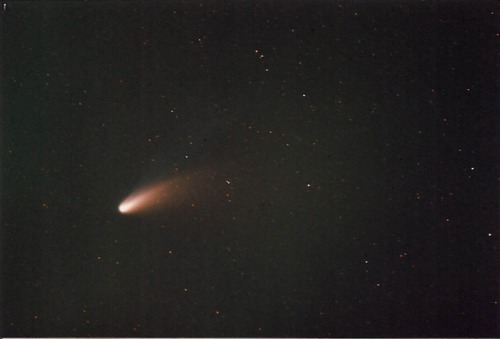
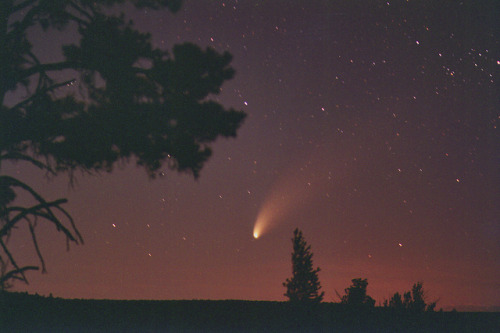
Comet Hale-Bopp
images: x, x
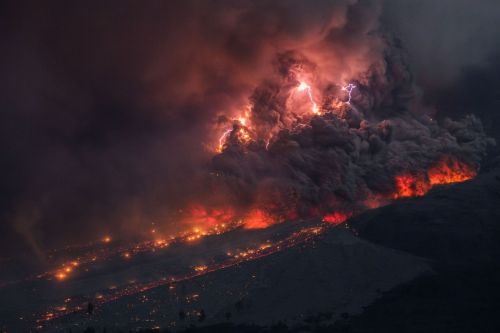
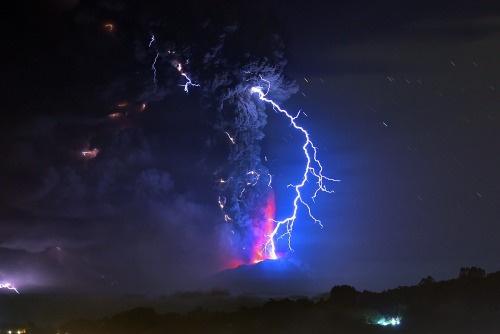
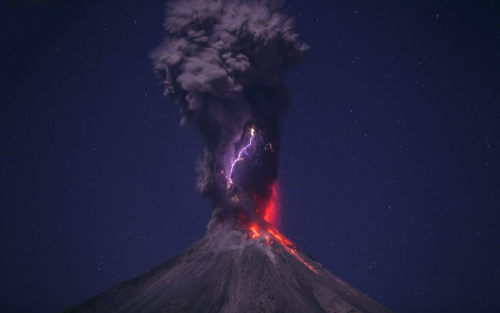
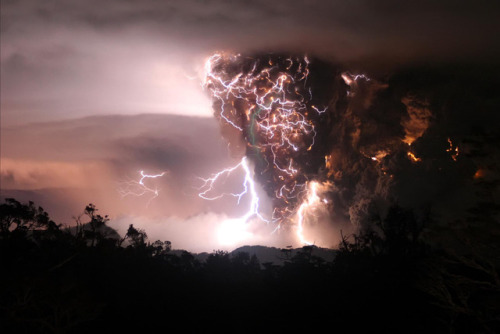
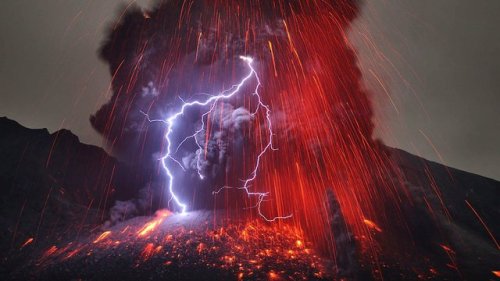
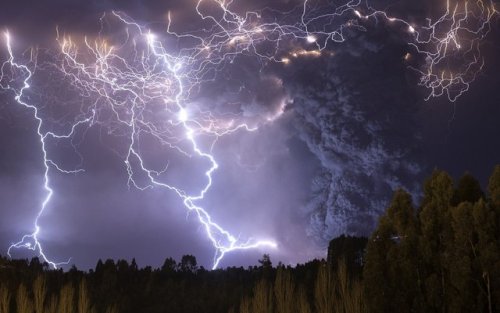
Dirty thunderstorm
A dirty thunderstorm (also volcanic lightning, thunder volcano) is a weather phenomenon that is related to the production of lightning in a volcanic plume.
A study in the journal Science indicated that electrical charges are generated when rock fragments, ash, and ice particles in a volcanic plume collide and produce static charges, just as ice particles collide in regular thunderstorms.
Volcanic eruptions are sometimes accompanied by flashes of lightning. However, this lightning doesn’t descend from storm clouds in the sky. It is generated within the ash cloud spewing from the volcano, in a process called charge separation.
source
images

Cassini mosaic of Iapetus, showing the bright trailing hemisphere with part of the dark area appearing on the right (the equatorial ridge is in profile on the right limb). The large crater Engelier is near the bottom; to its lower right can be seen the rim of a partly obliterated, slightly smaller older crater, Gerin.
This false-color mosaic shows the entire hemisphere of Iapetus (1,468 kilometers, or 912 miles across) visible from Cassini on the outbound leg of its encounter with the two-toned moon in Sept. 2007.
Credit: NASA/JPL
#cassini #iapetus #japeto #satellite #moon #lua #saturno #saturn #astronomy #astronomia https://www.instagram.com/p/B0kBRIHg3pQ/?igshid=meuno7r2ifg8
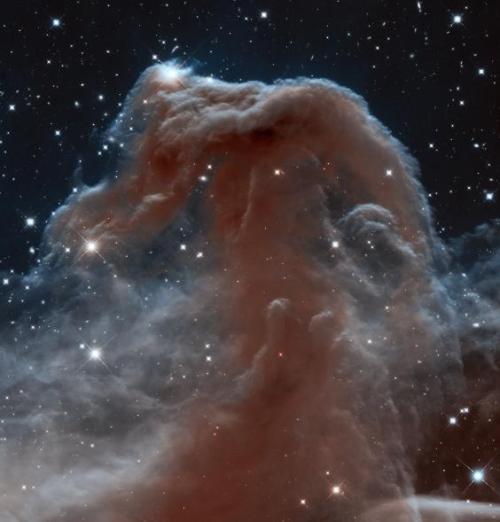
Known as the Horsehead Nebula – but you can call it Starbiscuit.
Found by our Hubble Space Telescope, this beauty is part of a much larger complex in the constellation Orion.
Make sure to follow us on Tumblr for your regular dose of space: http://nasa.tumblr.com.


The total solar eclipse of 02 July 2019 from La Serena, Chile.
Credit: Gwenael Blanck

2019 October 17
Moons of Saturn Image Credit: Cassini Imaging Team, SSI, JPL, NASA
Explanation: On July 29, 2011 the Cassini spacecraft’s narrow-angle camera took this snapshot and captured 5 of Saturn’s moons, from just above the ringplane. Left to right are small moons Janus and Pandora respectively 179 and 81 kilometers across, shiny 504 kilometer diameter Enceladus, and Mimas, 396 kilometers across, seen just next to Rhea. Cut off by the right edge of the frame, Rhea is Saturn’s second largest moon at 1,528 kilometers across. So how many moons does Saturn have? Twenty new found outer satellites bring its total to 82 known moons, and since Jupiter’s moon total stands at 79, Saturn is the Solar System’s new moon king. The newly announced Saturnian satellites are all very small, 5 kilometers or so in diameter, and most are in retrograde orbits inclined to Saturn’s ringplane. You can help name Saturn’s new moons, but you should understand the rules. Hint: A knowledge of Norse, Inuit, and Gallic mythology will help.
∞ Source: apod.nasa.gov/apod/ap191017.html
-
 davereed liked this · 2 years ago
davereed liked this · 2 years ago -
 lothlorienlover reblogged this · 2 years ago
lothlorienlover reblogged this · 2 years ago -
 badass-daisy-99 liked this · 3 years ago
badass-daisy-99 liked this · 3 years ago -
 gaiayukari85 reblogged this · 3 years ago
gaiayukari85 reblogged this · 3 years ago -
 gaiayukari85 liked this · 3 years ago
gaiayukari85 liked this · 3 years ago -
 hunkologistcowboy reblogged this · 3 years ago
hunkologistcowboy reblogged this · 3 years ago -
 stubborn-pint-sized-asshole liked this · 3 years ago
stubborn-pint-sized-asshole liked this · 3 years ago -
 jayfur reblogged this · 3 years ago
jayfur reblogged this · 3 years ago -
 jayfur liked this · 3 years ago
jayfur liked this · 3 years ago -
 desinatiie liked this · 3 years ago
desinatiie liked this · 3 years ago -
 onpowderedgrounds reblogged this · 4 years ago
onpowderedgrounds reblogged this · 4 years ago -
 irrigatie reblogged this · 4 years ago
irrigatie reblogged this · 4 years ago -
 treinmeisje liked this · 4 years ago
treinmeisje liked this · 4 years ago -
 stressiatella reblogged this · 4 years ago
stressiatella reblogged this · 4 years ago -
 s-usans-blog liked this · 4 years ago
s-usans-blog liked this · 4 years ago -
 northwetukbim reblogged this · 4 years ago
northwetukbim reblogged this · 4 years ago -
 northwetukbim liked this · 4 years ago
northwetukbim liked this · 4 years ago -
 ms-girdled reblogged this · 4 years ago
ms-girdled reblogged this · 4 years ago -
 greatmagazinestudent-world liked this · 4 years ago
greatmagazinestudent-world liked this · 4 years ago -
 omg-lucio liked this · 4 years ago
omg-lucio liked this · 4 years ago -
 dancing-wombat reblogged this · 4 years ago
dancing-wombat reblogged this · 4 years ago -
 justineofswords reblogged this · 5 years ago
justineofswords reblogged this · 5 years ago -
 justineofswords liked this · 5 years ago
justineofswords liked this · 5 years ago -
 kommandozeile reblogged this · 5 years ago
kommandozeile reblogged this · 5 years ago -
 summerwages liked this · 5 years ago
summerwages liked this · 5 years ago -
 mybookof-you reblogged this · 5 years ago
mybookof-you reblogged this · 5 years ago -
 badass-sesquipedalian liked this · 5 years ago
badass-sesquipedalian liked this · 5 years ago -
 thewolfofthestars liked this · 5 years ago
thewolfofthestars liked this · 5 years ago -
 patrickefoni liked this · 5 years ago
patrickefoni liked this · 5 years ago -
 widmerpool2014 liked this · 5 years ago
widmerpool2014 liked this · 5 years ago -
 whe-renot liked this · 5 years ago
whe-renot liked this · 5 years ago -
 trickbop reblogged this · 5 years ago
trickbop reblogged this · 5 years ago -
 inpraiseofpmg liked this · 5 years ago
inpraiseofpmg liked this · 5 years ago -
 number48 reblogged this · 5 years ago
number48 reblogged this · 5 years ago -
 bluebeetletedkord liked this · 5 years ago
bluebeetletedkord liked this · 5 years ago -
 belovedanathema reblogged this · 5 years ago
belovedanathema reblogged this · 5 years ago -
 laughingacademy reblogged this · 5 years ago
laughingacademy reblogged this · 5 years ago -
 laughingacademy liked this · 5 years ago
laughingacademy liked this · 5 years ago -
 thalia-amongst-the-thorns reblogged this · 5 years ago
thalia-amongst-the-thorns reblogged this · 5 years ago -
 glitternotyou reblogged this · 5 years ago
glitternotyou reblogged this · 5 years ago
